10 Best Herbal Creams For Fluid Retention
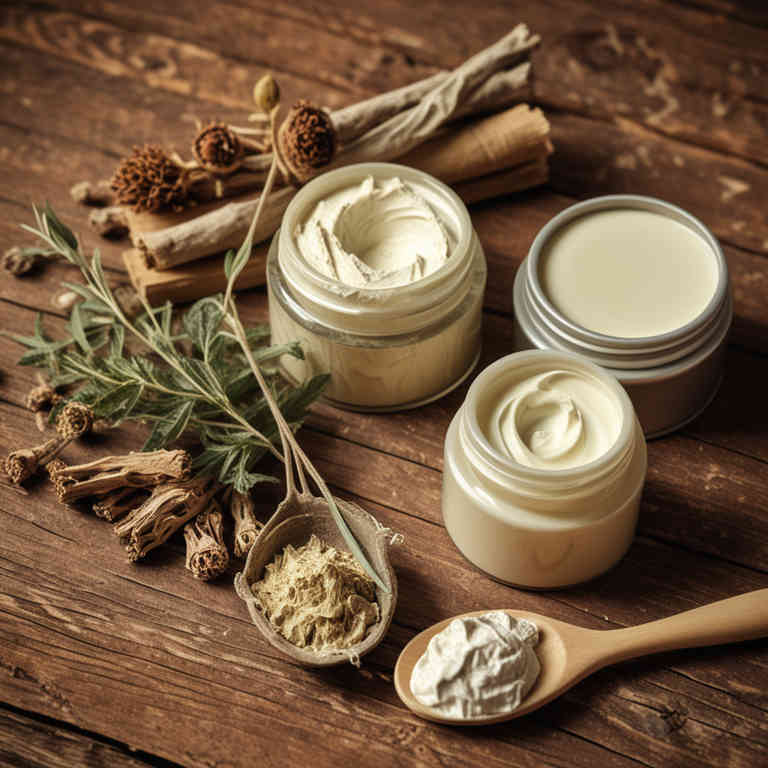
Herbal creams for fluid retention are natural topical treatments that aim to reduce swelling and puffiness by incorporating ingredients like horse chestnut, witch hazel, and garlic, which are known for their anti-inflammatory and circulatory benefits.
These creams work by improving blood and lymphatic circulation, helping the body eliminate excess fluids more efficiently. They are often preferred by individuals seeking alternative or complementary therapies to conventional treatments for conditions such as edema or lymphedema. While they may not replace medical advice, they can offer mild relief and support overall skin health.
However, it is important to consult a healthcare professional before using herbal creams, especially if you have underlying health conditions or are taking medications.
FREE Herb Drying Checklist
How to make sure every batch retains maximum flavor, color, and aroma without the risk of mold or over-drying. Eliminate guesswork and trial-and-error, making herb drying faster, easier, and more efficient every time.
Table of Contents
1. Urtica dioica
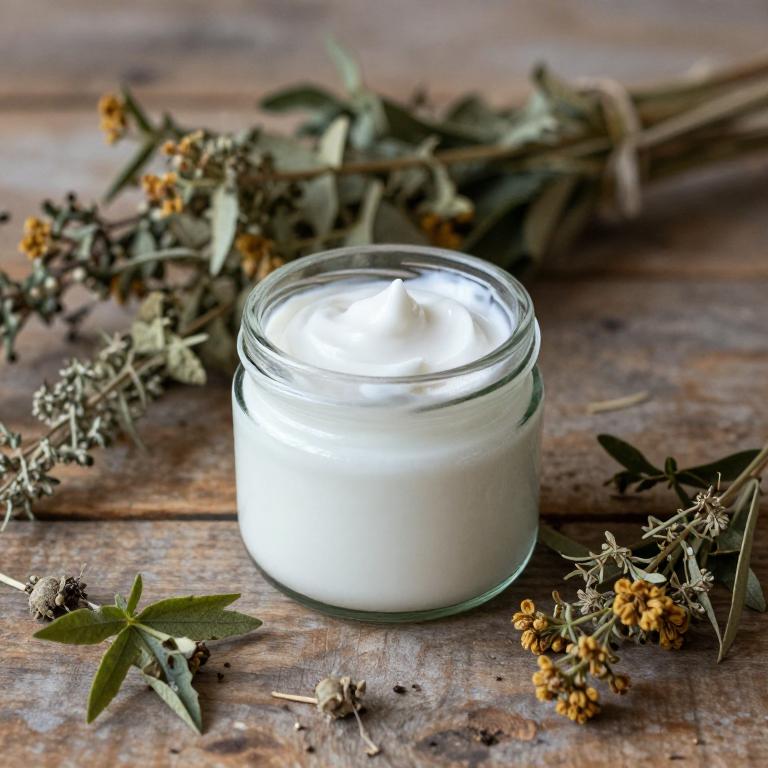
Urtica dioica, commonly known as stinging nettle, is a plant that has been traditionally used for its various health benefits, including the management of fluid retention.
Herbal creams containing urtica dioica are formulated to help reduce swelling and water retention by promoting lymphatic drainage and reducing inflammation. These creams often include other natural ingredients such as essential oils and anti-inflammatory compounds to enhance their effectiveness. The active compounds in stinging nettle, such as flavonoids and minerals, are believed to support the body's natural processes in eliminating excess fluids.
When used topically, these creams can provide a soothing effect while addressing localized fluid retention issues.
2. Cnicus benedictus

Cnicus benedictus, also known as blessed thorn, is a traditional herbal remedy that has been used for its potential diuretic properties.
When formulated into creams, it may help reduce fluid retention by promoting the elimination of excess water from the body. These herbal creams are often applied topically to areas prone to swelling, such as the legs and ankles, where fluid accumulation is common. While some studies suggest that Cnicus benedictus may support lymphatic drainage, more research is needed to confirm its efficacy and safety.
As with any herbal product, it is advisable to consult a healthcare professional before use, especially for individuals with pre-existing medical conditions or those taking other medications.
3. Silybum marianum

Silybum marianum, commonly known as milk thistle, is a herbal remedy that has been traditionally used for its potential health benefits, including support for liver function.
Some herbal creams containing silybum marianum are marketed for their ability to reduce fluid retention, particularly in the legs and ankles, by improving circulation and promoting the elimination of excess fluids from the body. These creams often combine silybum marianum with other natural ingredients such as horse chestnut or ginger, which are believed to enhance their effectiveness. However, while some studies suggest that milk thistle may have mild diuretic properties, the scientific evidence supporting its use in topical creams for fluid retention is limited.
It is important to consult a healthcare professional before using such products, especially if you have underlying health conditions or are taking other medications.
4. Rosa canina
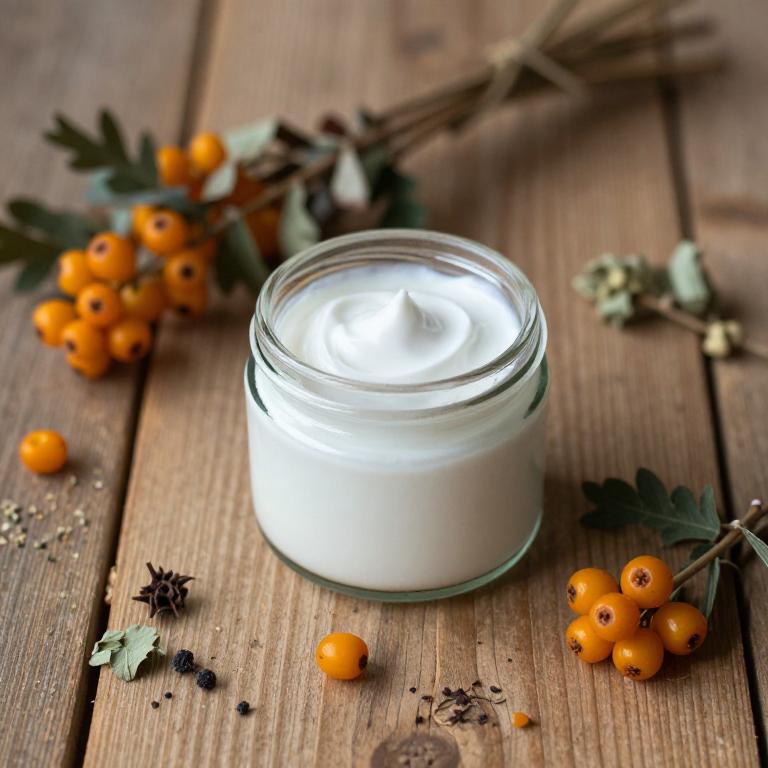
Rosa canina, also known as rosehip, is a traditional herbal remedy commonly used in the formulation of herbal creams to address fluid retention.
These creams are often enriched with rosehip oil, which is rich in essential fatty acids and antioxidants that may help reduce inflammation and support skin health. The anti-inflammatory properties of rosa canina may aid in reducing swelling associated with fluid retention, making it a popular choice for those seeking natural remedies. When applied topically, these creams can help improve circulation and reduce the appearance of swollen areas, such as ankles and legs.
However, while rosa canina creams may provide some relief, they are typically used as a complementary treatment alongside other approaches recommended by healthcare professionals.
5. Vitex agnus-castus
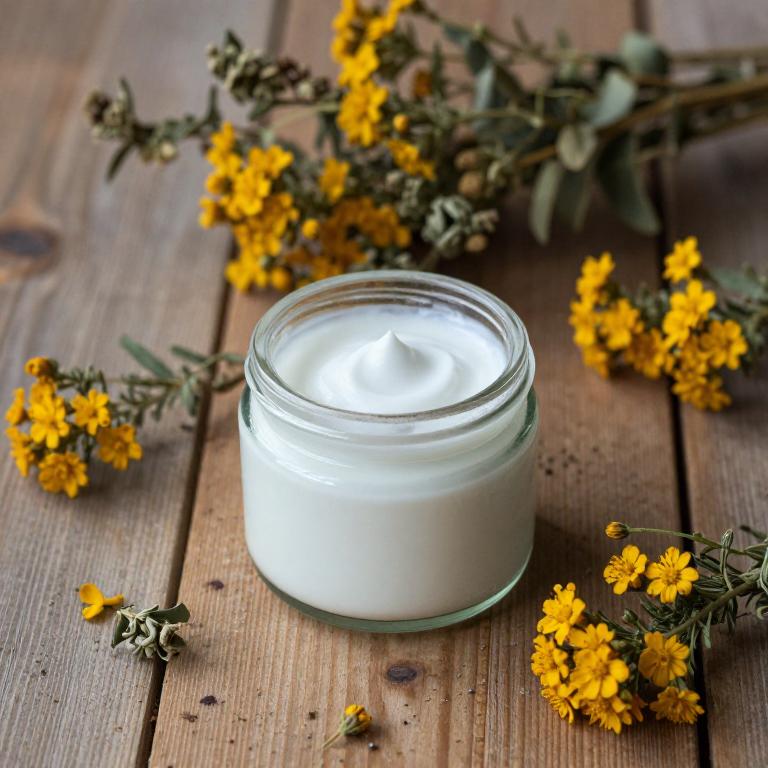
Vitex agnus-castus, commonly known as chasteberry, is often used in herbal creams to address fluid retention due to its potential hormonal balancing properties.
These creams may help reduce water retention by supporting the body's natural regulation of estrogen and progesterone levels. The active compounds in vitex, such as flavonoids and iridoids, are believed to enhance circulation and reduce swelling in tissues. While some studies suggest its efficacy in managing premenstrual symptoms, more research is needed to confirm its effectiveness for fluid retention.
When using vitex-based creams, it is advisable to consult a healthcare provider, especially for individuals with hormone-sensitive conditions.
6. Lavandula angustifolia
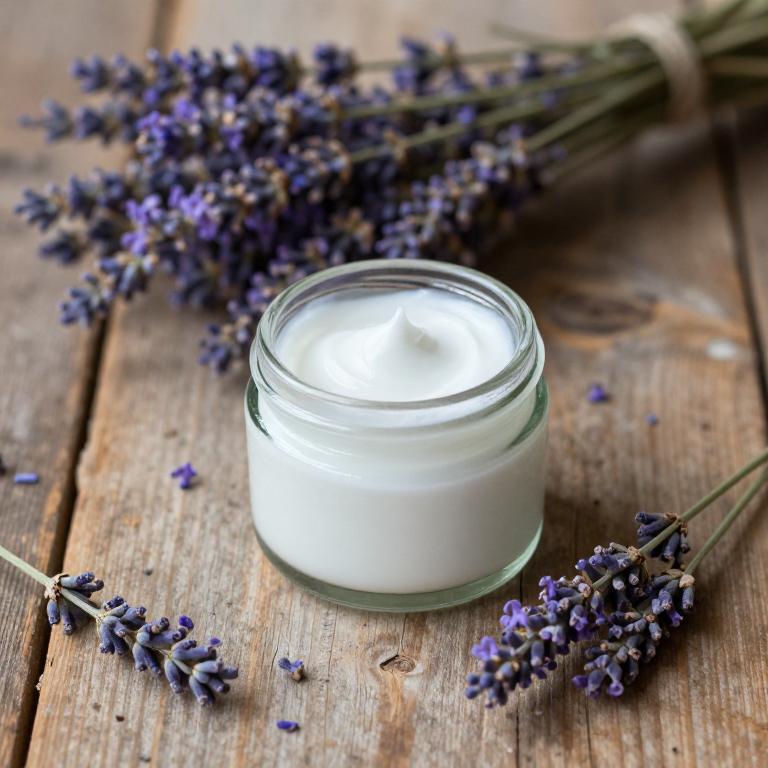
Lavandula angustifolia, commonly known as English lavender, is often incorporated into herbal creams due to its soothing and anti-inflammatory properties.
These creams may help reduce fluid retention by promoting circulation and easing inflammation in the tissues. The calming essential oils in lavender can also provide a relaxing effect, which may indirectly support lymphatic drainage. While not a substitute for medical treatments, lavender-based creams can be a complementary option for those seeking natural relief from mild swelling.
However, individuals with sensitive skin or allergies should perform a patch test before use to avoid adverse reactions.
7. Achillea millefolium
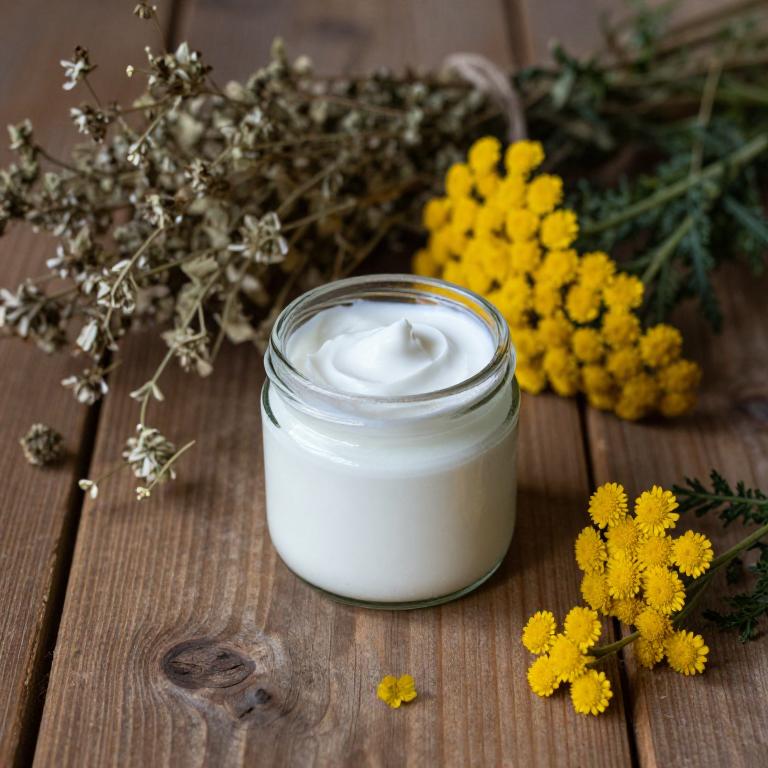
Achillea millefolium, commonly known as yarrow, has been traditionally used in herbal medicine for its anti-inflammatory and diuretic properties.
When incorporated into herbal creams, it may help reduce fluid retention by promoting the elimination of excess water from the body. These creams often combine yarrow with other herbs like horsetail or nettle to enhance their draining effects. However, individuals with sensitive skin or existing health conditions should consult a healthcare professional before use.
While some studies suggest potential benefits, more research is needed to fully understand the efficacy of achillea millefolium in treating fluid retention.
8. Zingiber officinale
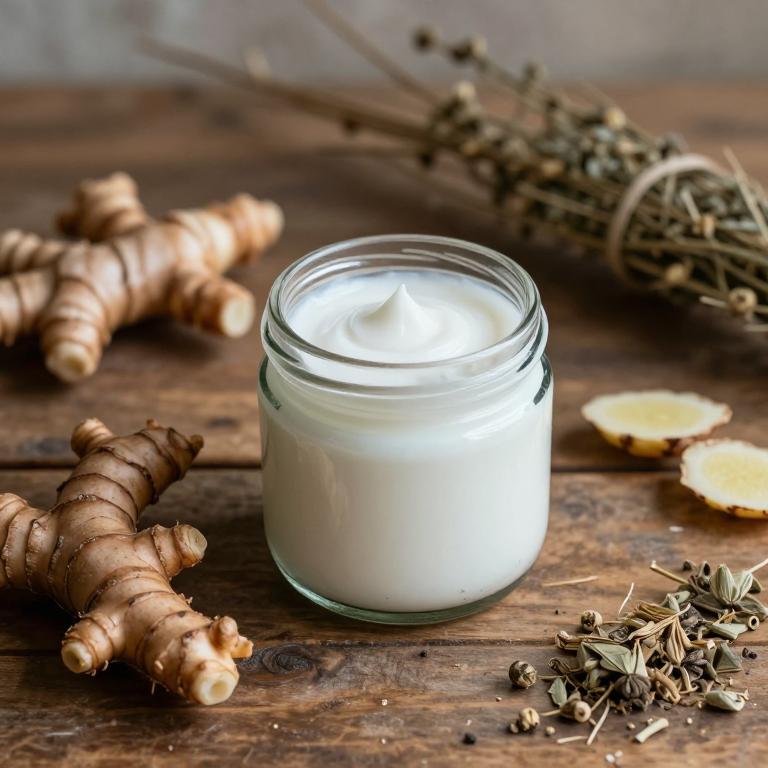
Zingiber officinale, commonly known as ginger, is often incorporated into herbal creams for its potential benefits in reducing fluid retention.
These creams typically contain ginger extract, which is believed to have anti-inflammatory and circulatory properties that may help in reducing swelling and water retention in the body. The active compounds in ginger, such as gingerol and shogaol, are thought to enhance blood circulation and promote the elimination of excess fluids. While some studies suggest that ginger may support lymphatic drainage, more research is needed to confirm its effectiveness in treating fluid retention.
Herbal creams with zingiber officinale are generally considered safe for topical use, though individuals with sensitive skin should perform a patch test before applying them extensively.
9. Nymphaea alba
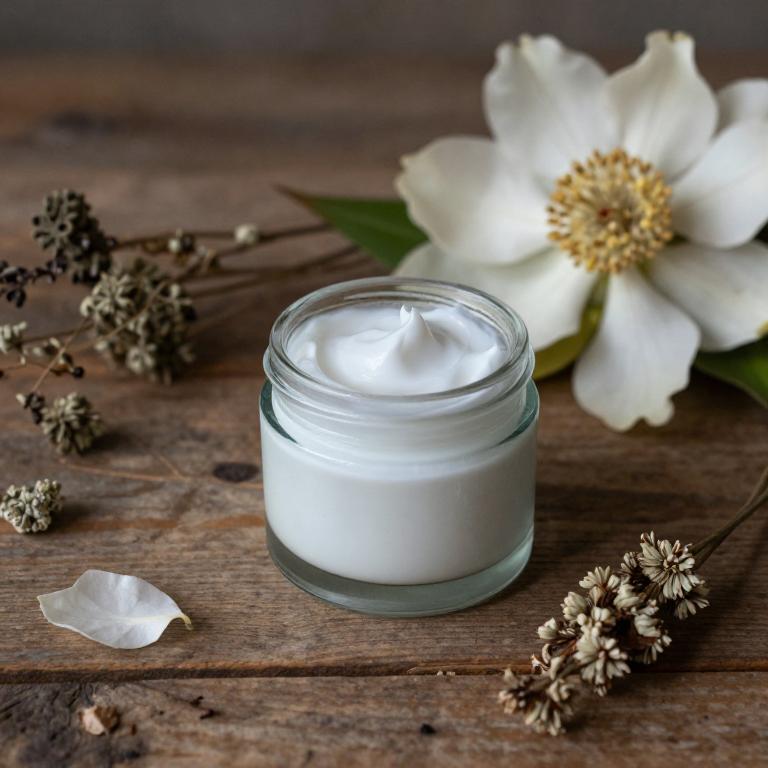
Nymphaea alba, also known as white water lily, has been traditionally used in herbal medicine for its potential benefits in reducing fluid retention.
The active compounds in Nymphaea alba, such as flavonoids and tannins, are believed to support lymphatic drainage and reduce swelling in tissues. Herbal creams infused with Nymphaea alba may help alleviate symptoms associated with edema, particularly in the legs and ankles. These creams are often combined with other botanicals like horse chestnut and witch hazel to enhance their efficacy.
When used as part of a holistic approach, Nymphaea alba herbal creams may offer a natural and soothing alternative for managing fluid retention.
10. Vitis vinifera

Vitis vinifera, commonly known as the grape vine, has been traditionally used in herbal medicine for its potential benefits in reducing fluid retention.
Herbal creams infused with Vitis vinifera extracts are believed to support the body's natural processes in managing excess fluid buildup, often associated with conditions like edema. These creams may contain bioactive compounds such as resveratrol, which is known for its anti-inflammatory and antioxidant properties. When applied topically, they can help soothe swollen areas and promote better circulation.
While not a substitute for medical treatment, these creams may offer a complementary approach to managing mild fluid retention symptoms.